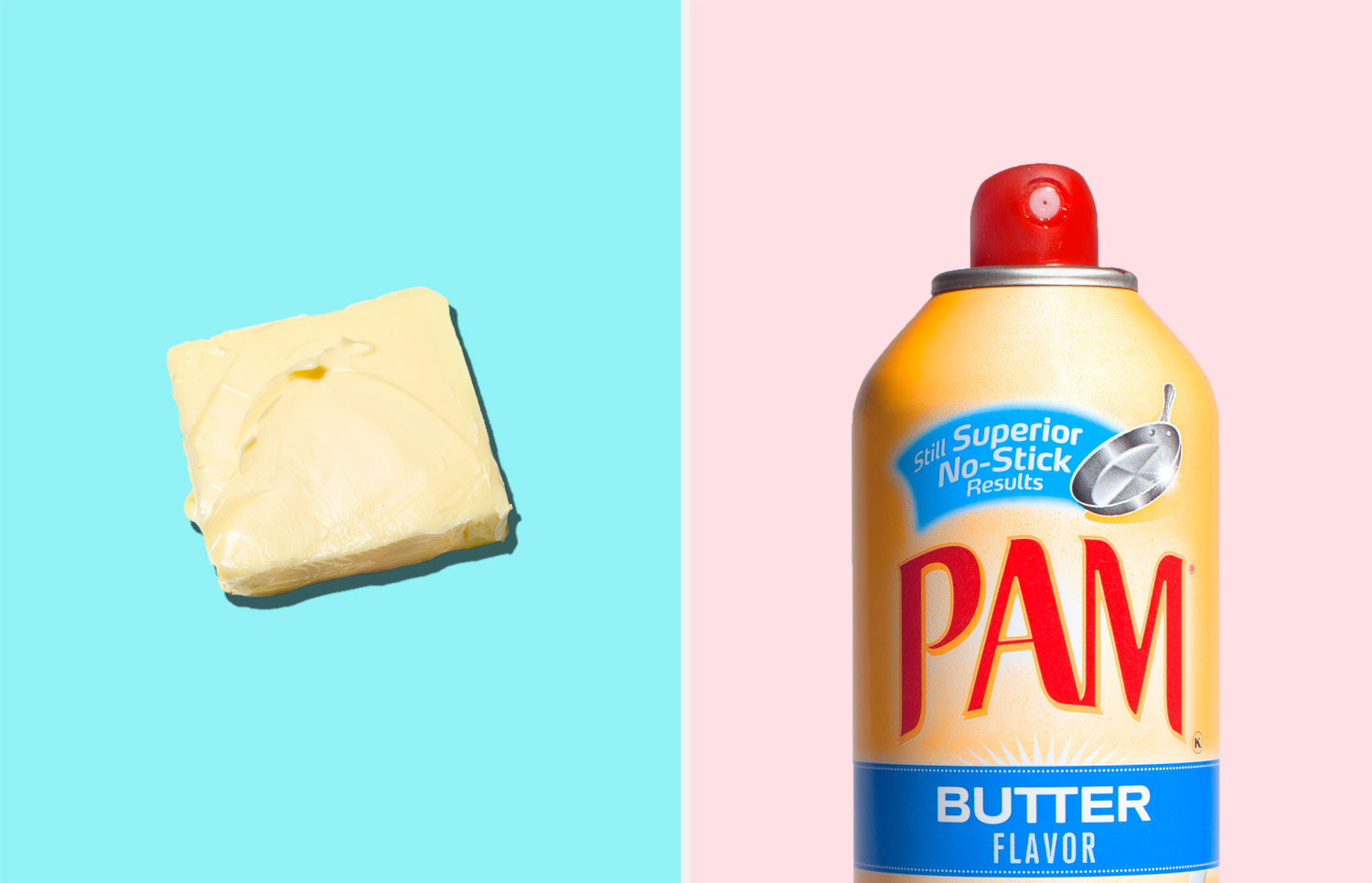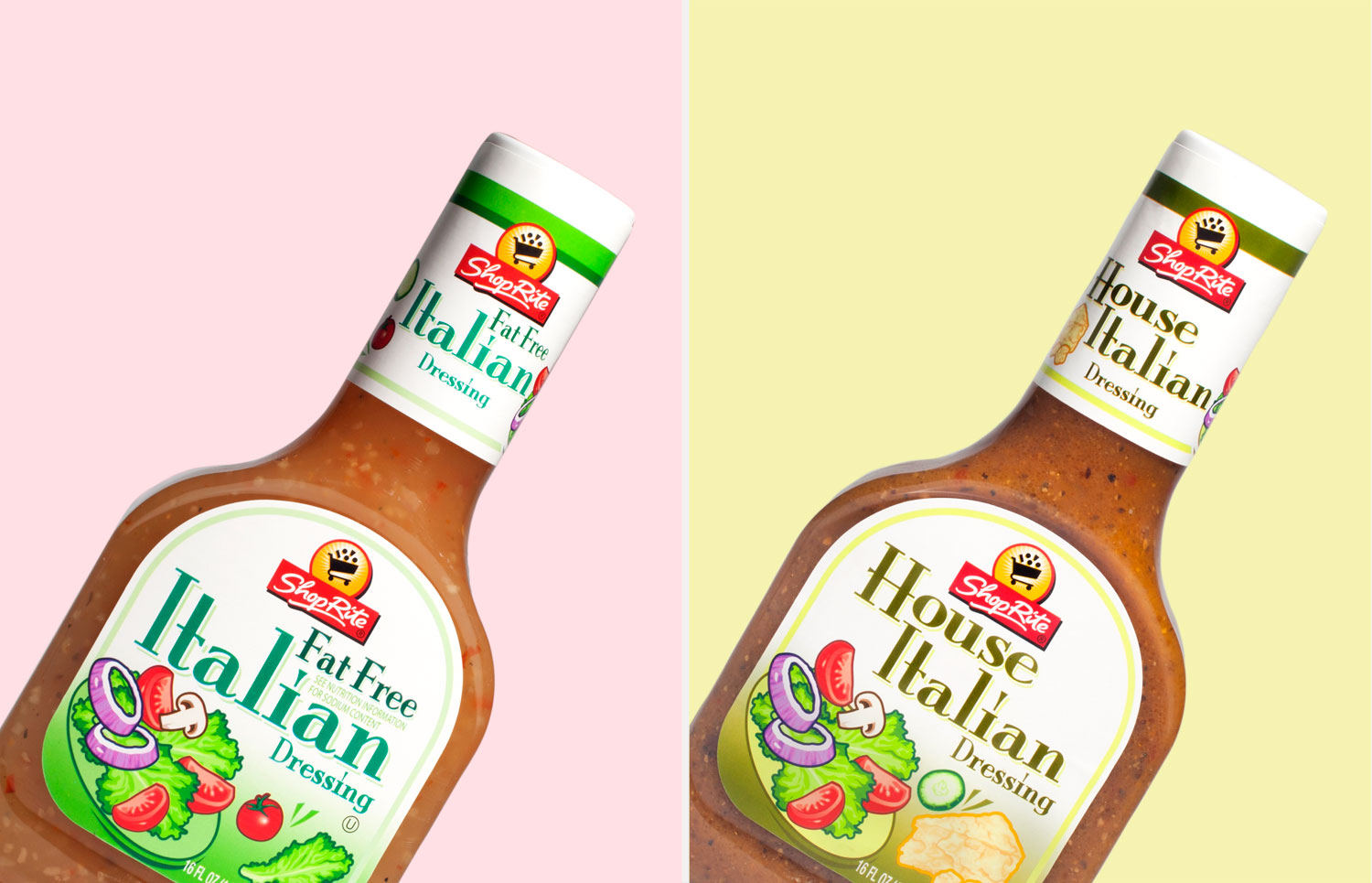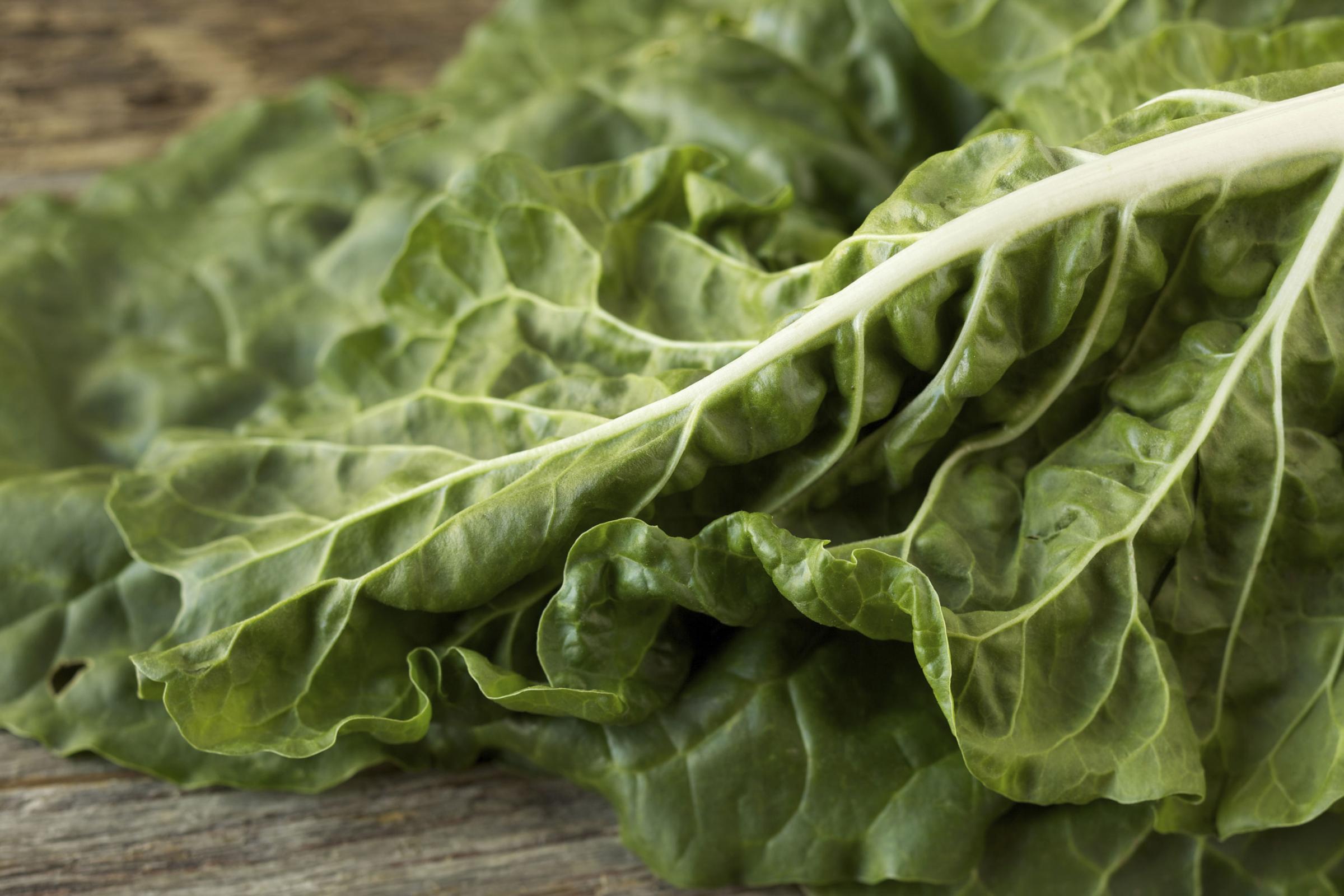You are getting a free preview of a TIME Magazine article from our archive. Many of our articles are reserved for subscribers only. Want access to more subscriber-only content, click here to subscribe.
The taste of my childhood was the taste of skim milk. We spread bright yellow margarine on dinner rolls, ate low-fat microwave oatmeal flavored with apples and cinnamon, put nonfat ranch on our salads. We were only doing what we were told. In 1977, the year before I was born, a Senate committee led by George McGovern published its landmark “Dietary Goals for the United States,” urging Americans to eat less high-fat red meat, eggs and dairy and replace them with more calories from fruits, vegetables and especially carbohydrates.
By 1980 that wisdom was codified. The U.S. Department of Agriculture (USDA) issued its first dietary guidelines, and one of the primary directives was to avoid cholesterol and fat of all sorts. The National Institutes of Health recommended that all Americans over the age of 2 cut fat consumption, and that same year the government announced the results of a $150 million study, which had a clear message: Eat less fat and cholesterol to reduce your risk of a heart attack.
QUIZ: Should You Eat This or That?
















The food industry–and American eating habits–jumped in step. Grocery shelves filled with “light” yogurts, low-fat microwave dinners, cheese-flavored crackers, cookies. Families like mine followed the advice: beef disappeared from the dinner plate, eggs were replaced at breakfast with cereal or yolk-free beaters, and whole milk almost wholly vanished. From 1977 to 2012, per capita consumption of those foods dropped while calories from supposedly healthy carbohydrates increased–no surprise, given that breads, cereals and pasta were at the base of the USDA food pyramid.
MORE: Give (Frozen) Peas a Chance–and Carrots Too
We were embarking on a “vast nutritional experiment,” as the skeptical president of the National Academy of Sciences, Philip Handler, put it in 1980. But with nearly a million Americans a year dropping dead from heart disease by the mid-’80s, we had to try something.
Nearly four decades later, the results are in: the experiment was a failure. We cut the fat, but by almost every measure, Americans are sicker than ever. The prevalence of Type 2 diabetes increased 166% from 1980 to 2012. Nearly 1 in 10 American adults has the disease, costing the health care system $245 billion a year, and an estimated 86 million people are prediabetic. Deaths from heart disease have fallen–a fact that many experts attribute to better emergency care, less smoking and widespread use of cholesterol-controlling drugs like statins–but cardiovascular disease remains the country’s No. 1 killer. Even the increasing rates of exercise haven’t been able to keep us healthy. More than a third of the country is now obese, making the U.S. one of the fattest countries in an increasingly fat world. “Americans were told to cut back on fat to lose weight and prevent heart disease,” says Dr. David Ludwig, the director of the New Balance Foundation Obesity Prevention Center at Boston Children’s Hospital. “There’s an overwhelmingly strong case to be made for the opposite.”
But making that case is controversial, despite the evidence to support it. The vilification of fat is now deeply embedded in our culture, with its love-hate relationship with food and its obsession over weight. It has helped reshape vast swaths of agriculture, as acre upon acre of subsidized corn was planted to produce the sweeteners that now fill processed foods. It has changed business, with the market for fat replacers–the artificial ingredients that take the place of fat in packaged food–growing by nearly 6% a year. It’s even changed the way we talk, attaching moral terms to nutrients in debates over “bad” cholesterol vs. “good” cholesterol and “bad” fat vs. “good” fat.
7 Foods That Taste Better Now Than They Will All Year







MORE: The Oz Diet
All of this means the received wisdom is not going to change quietly. “This is a huge paradigm shift in science,” says Dr. Eric Westman, the director of the Duke Lifestyle Medicine Clinic, who works with patients on ultra-low-carb diets. “But the studies to support it do exist.”
Research that challenges the idea that fat makes people fat and is a dire risk factor for heart disease is mounting. And the stakes are high–for researchers, for public-health agencies and for average people who simply want to know what to put in their mouth three times a day.
We have known for some time that fats found in vegetables like olives and in fish like salmon can actually protect against heart disease. Now it’s becoming clear that even the saturated fat found in a medium-rare steak or a slab of butter–public-health enemies Nos. 1 and 2–has a more complex and, in some cases, benign effect on the body than previously thought. Our demonization of fat may have backfired in ways we are just beginning to understand. When Americans cut back, the calories from butter and beef and cheese didn’t simply disappear. “The thinking went that if people reduced saturated fat, they would replace it with healthy fruits and vegetables,” says Marion Nestle, a professor of nutrition, food studies and public health at New York University. “Well, that was naive.”
MORE: Don’t Blame Fat—Further Reading
New research suggests that it’s the overconsumption of carbohydrates, sugar and sweeteners that is chiefly responsible for the epidemics of obesity and Type 2 diabetes. Refined carbohydrates–like those in “wheat” bread, hidden sugar, low-fat crackers and pasta–cause changes in our blood chemistry that encourage the body to store the calories as fat and intensify hunger, making it that much more difficult to lose weight. “The argument against fat was totally and completely flawed,” says Dr. Robert Lustig, a pediatrician at the University of California, San Francisco, and the president of the Institute for Responsible Nutrition. “We’ve traded one disease for another.”
The myopic focus on fat has warped our diet and contributed to the biggest health crises facing the country. It’s time to end the war.
The Fat Man
We have long been told that fewer calories and more exercise leads to weight loss. And we want to believe that science is purely a matter of data–that superior research will always yield the right answer. But sometimes research is no match for a strong personality. No one better embodies that than Dr. Ancel Keys, the imperious physiologist who laid the groundwork for the fight against fat. Keys first made his name during World War II, when he was asked by the Army to develop what would become known as the K ration, the imperishable food supplies carried by troops into the field. It was in the following years that the fear of heart disease exploded in the U.S., driven home by President Dwight Eisenhower’s heart attack in 1955. That year, nearly half of all deaths in the U.S. were due to heart disease, and many of the victims were seemingly healthy men struck down suddenly by a heart attack. “There was an enormous fear overtaking the country,” says Nina Teicholz, author of the new book The Big Fat Surprise. “The heart-disease epidemic seemed to be emerging out of nowhere.”
Keys had an explanation. He posited that high levels of cholesterol–a waxy, fatlike substance present in some foods as well as naturally occurring in the body–would clog arteries, leading to heart disease. He had a solution as well. Since fat intake raised LDL cholesterol, he reasoned that reducing fat in the diet could reduce the risk of heart attacks. (LDL cholesterol levels are considered a marker for heart disease, while high HDL cholesterol seems to be cardioprotective.) In the 1950s and ’60s, Keys sought to flesh out that hypothesis, traveling around the world to gather data about diet and cardiovascular disease. His landmark Seven Countries Study found that people who ate a diet low in saturated fat had lower levels of heart disease. The Western diet, heavy on meat and dairy, correlated with high rates of heart disease. That study helped land Keys in 1961 on the cover of TIME, in which he admonished Americans to reduce the fat calories in their diet by a third if they wanted to avoid heart disease. That same year, following Keys’ strong urging, the American Heart Association (AHA) advised Americans for the first time to cut down on saturated fat. “People should know the facts,” Keys told TIME. “Then if they want to eat themselves to death, let them.”
Keys’ work became the foundation for a body of science implicating fat as a major risk factor for heart disease. The Seven Countries Study has been referenced close to 1 million times. The vilification of fat also fit into emerging ideas about weight control, which focused on calories in vs. calories out. “Everyone assumed it was all about the calories,” says Lustig. And since fat contains more calories per gram than protein or carbohydrates, the thinking was that if we removed fat, the calories would follow.
That’s what Keys, who died in 2004, believed, and now it’s what most Americans believe too. But Keys’ research had problems from the start. He cherry-picked his data, leaving out countries like France and West Germany that had high-fat diets but low rates of heart disease. Keys highlighted the Greek island of Crete, where almost no cheese or meat was eaten and people lived to an old age with clear arteries. But Keys visited Crete in the years following World War II, when the island was still recovering from German occupation and the diet was artificially lean. Even more confusing, Greeks on the neighboring isle of Corfu ate far less saturated fat than Cretans yet had much higher rates of heart disease. “It was highly flawed,” says Dr. Peter Attia, the president and director of the Nutrition Science Initiative, an independent obesity-research center. “It was not on the level of epidemiology work today.”
Keys’ unshakable confidence and his willingness to take down any researcher who disagreed with him was at least as important as his massive data sets. (When the biostatistician Jacob Yerushalmy published a 1957 paper questioning the causal relationship between fat and heart disease, Keys responded sharply in print, claiming that Yerushalmy’s data was badly flawed.) Keys’ research also played into a prevailing narrative that Americans had once eaten a largely plant-based diet before shifting in the 20th century to meals rich in red meat. Heart disease followed, as if we were being punished for our dietary sins.
See the 10 Healthiest Cities to Live in America










The reality is that hard numbers about the American diet are scant before midcentury and all but nonexistent before 1900. Historical records suggest Americans were always voracious omnivores, feasting on the plentiful wild game available throughout the country. In his book Putting Meat on the American Table, the historian Roger Horowitz concludes that the average American in the 19th century ate 150 to 200 lb. of meat per year–in line with what we eat now.
But the antifat message went mainstream, and by the 1980s it was so embedded in modern medicine and nutrition that it became nearly impossible to challenge the consensus. Dr. Walter Willett, now the head of the department of nutrition at the Harvard School of Public Health, tells me that in the mid-1990s, he was sitting on a piece of contrary evidence that none of the leading American science journals would publish. “There was a strong belief that saturated fat was the cause of heart disease, and there was resistance to anything that questioned it,” Willett says. “It turned out to be more nuanced than that.” He had been running a long-term epidemiological study that followed the diets and heart health of more than 40,000 middle-aged men. Willett found that if his subjects replaced foods high in saturated fat with carbohydrates, they experienced no reduction in heart disease. Willett eventually published his research in the British Medical Journal in 1996.
In part because of Willett’s work, the conversation around fat began to change. Monounsaturated and polyunsaturated fats–the kind found in some vegetables and fish–were found to be beneficial to heart health. The Mediterranean diet, rich in fish, nuts, vegetables and olive oil, surged in popularity. And it’s worth noting that the Mediterranean diet isn’t low in total fat–not at all. Up to 40% of its calories come from poly- and monounsaturated fat. Today, medical groups like the Mayo Clinic embrace this diet for patients worried about heart health, and even the fat-phobic AHA has become receptive to it. “There is growing evidence that the Mediterranean diet is a pretty healthy way to eat,” says Dr. Rose Marie Robertson, the chief science officer of the AHA.
But what about saturated fat? Here, the popular wisdom has been harder to change. The 2010 USDA dietary guidelines recommend that Americans get less than 10% of their daily calories from saturated fat–the equivalent of half a pan-broiled hamburger minus the cheese, bacon and mayo it’s often dressed with. The AHA is even stricter: Americans over the age of 2 should limit saturated-fat intake to less than 7% of calories, and the 70 million Americans who would benefit from lowering cholesterol should keep it under 6% of calories–equal to about two slices of cheddar per day. Some experts say they just aren’t comfortable letting saturated fat off the hook. “When you replace saturated fats with polyunsaturated and monounsaturated fats, you lower LDL cholesterol,” says Dr. Robert Eckel, a past president of the AHA and a co-author of the group’s recent guidelines. “That’s all I need to know.”
But that’s not the full picture. The more we learn about fat, the more complex its effects on the body appear.
The Truth About Fat
The idea that saturated fat is bad for us makes a kind of instinctive sense, and not just because we use the same phrase to describe both the greasy stuff that gives our steak flavor and the pounds we carry around our middles. Chemically, they’re not all that different. The fats that course through our blood and accumulate on our bellies are called triglycerides, and high levels of triglycerides have been linked to heart disease. It doesn’t take much of an imaginative leap to assume that eating fats would make us fat, clog our arteries and give us heart disease. “It sounds like common sense–you are what you eat,” says Dr. Stephen Phinney, a nutritional biochemist who has studied low-carb diets for years.
But when scientists crunch the numbers, the connection between saturated fat and cardiovascular disease becomes more tenuous. A 2010 meta-analysis–basically a study of other studies–concluded that there was no significant evidence that saturated fat is associated with an increased risk of cardiovascular disease. Those results were echoed by another meta-analysis published in March in the Annals of Internal Medicine that drew on nearly 80 studies involving more than half a million subjects. A team led by Dr. Rajiv Chowdhury, a cardiovascular epidemiologist at Cambridge University, concluded that current evidence does not support low consumption of saturated fats or high consumption of the polyunsaturated fats that are often considered heart healthy. Though the authors came under criticism for the way they evaluated the evidence, they stand behind the conclusion, noting that the aim of their study is to show the need for more research. “The main message is that there’s a lot more work that needs to be done,” says Chowdhury.
Given that the case on saturated fat was long considered closed, even calls to re-examine the evidence mark a serious change. But if the new thinking about saturated fats is surprising, it may be because we’ve misunderstood what meat and dairy do to our bodies. It’s incontrovertibly true that saturated fat will raise LDL-cholesterol levels, which are associated with higher rates of heart disease. That’s the most damning biological evidence against saturated fat. But cholesterol is more complicated than that. Saturated fat also raises levels of the so-called good HDL cholesterol, which removes the LDL cholesterol that can accumulate on arterial walls. Raising both HDL and LDL makes saturated fat a cardio wash.
Plus, scientists now know there are two kinds of LDL particles: small, dense ones and large, fluffy ones. The large ones seem to be mostly harmless–and it’s the levels of those large particles that fat intake raises. Carb intake, meanwhile, seems to increase the small, sticky particles that now appear linked to heart disease. “Those observations led me to wonder how strong the evidence was for the connection between saturated fat and heart disease,” says Dr. Ronald Krauss, a cardiologist and researcher who has done pioneering work on LDL. “There’s a risk that people have been steered in the wrong direction by using LDL cholesterol rather than LDL particles as a risk factor.”
It’s important to understand that there’s no such thing as a placebo in a diet study. When we reduce levels of one nutrient, we have to replace it with something else, which means researchers are always studying nutrients in relation to one another. It’s also important to understand that the new science doesn’t mean people should double down on cheeseburgers or stir large amounts of butter into their morning coffee, as do some adherents of ultra-low-carb diets. While saturated fat increasingly seems to have at worst a neutral effect on obesity and heart disease, other forms of fat may be more beneficial. There’s evidence that omega-3s, the kind of fat found in flaxseed and salmon, can protect against heart disease. A 2013 study in the New England Journal of Medicine found that a diet rich in polyunsaturated and monounsaturated fats significantly reduced the risk of major cardiovascular events.
And there is variety even within the category of saturated fats. A 2012 study found that fats in dairy–now the source from which Americans get most of their saturated fat–seem to be more protective than the fats found in meat. “The main issue here is comparative,” says Dr. Frank Hu, a nutrition expert at the Harvard School of Public Health. “What are you comparing saturated fat to?”
The Unintended Diet
The food industry is nothing if not inventive. Faced with a fatwa against fat in the 1980s, manufacturers adjusted, lining grocery shelves with low-fat cookies, crackers and cakes. The thinking for consumers was simple: Fat is dangerous, and this product has no fat; therefore it must be healthy. This was the age of SnackWells, the brand of low-fat cookies introduced by Nabisco in 1992 that within two years had surpassed the venerable Ritz cracker to become the No. 1 snack in the nation. But without fat, something had to be added, and Americans wound up making a dangerous trade. “We just cut fat and added a whole lot of low-fat junk food that increased caloric intake,” says Dr. David Katz, the founding director of Yale University’s Prevention Research Center. “It was a diet of unintended consequences.”
Those consequences have been severe. From 1971 to 2000, the percentage of calories from carbohydrates increased nearly 15%, while the share of calories from fat fell–in line with expert recommendations. In 1992, the USDA recommended up to 11 servings a day of grains, compared with just two to three servings of meat, eggs, nuts, beans and fish combined. School districts across the country have banned whole milk, yet sweetened chocolate milk remains on the menu as long as it’s low-fat.
The idea here was in part to cut calories, but Americans actually ended up eating more: 2,586 calories a day in 2010 compared with 2,109 a day in 1970. Over that same period, calories from flour and cereals went up 42%, and obesity and Type 2 diabetes became veritable epidemics. “It’s undeniable we’ve gone down the wrong path,” says Jeff Volek, a physiologist at the University of Connecticut.
It can be hard to understand why a diet heavy on refined carbs can lead to obesity and diabetes. It has to do with blood chemistry. Simple carbs like bread and corn may not look like sugar on your plate, but in your body, that’s what they’re converted to when digested. “A bagel is no different than a bag of Skittles to your body,” says Dr. Dariush Mozaffarian, the incoming dean of nutrition science at Tufts University.
Those sugars stimulate the production of insulin, which causes fat cells to go into storage overdrive, leading to weight gain. Since fewer calories are left to fuel the body, we begin to feel hungry, and metabolism begins to slow in an effort to save energy. We eat more and gain more weight, never feeling full. “Hunger is the death knell of a weight-loss program,” says Duke’s Westman. “A low-fat, low-calorie diet doesn’t work.” Because as this process repeats, our cells become more resistant to insulin, which causes us to gain more weight, which only increases insulin resistance in a vicious circle. Obesity, Type 2 diabetes, high triglycerides and low HDL can all follow–and fat intake is barely involved. All calories, it turns out, are not created equal. “When we focus on fat, carbohydrates inevitably increase,” says Ludwig, who co-wrote a recent JAMA commentary on the subject. “You wouldn’t give lactose to people who are lactose intolerant, yet we give carbs to people who are carb intolerant.”
Ultra-low-carb diets have come in and out of vogue since Dr. Robert Atkins first began promoting his version nearly 50 years ago. (It has never been popular with mainstream medicine; the American Diabetic Association once referred to the Atkins diet as a “nutritionist’s nightmare.”) Studies by Westman found that replacing carbohydrates with fat could help manage and even reverse diabetes. A 2008 study in the New England Journal of Medicine that looked at more than 300 subjects who tried either a low-fat, a low-carb or a Mediterranean-style diet found that people on the low-fat diet lost less weight than those on the low-carb or Mediterranean diet, both of which feature high amounts of fat. Those results aren’t surprising–study after study has found that it’s very difficult to lose weight on a very low-fat diet, possibly because fat and meat can produce a sense of satiety that’s harder to achieve with carbs, making it easier to simply stop eating.
Not every expert agrees. Dr. Dean Ornish, founder of the nonprofit Preventive Medicine Research Institute, whose low-fat, almost vegan diet has been shown in one study to reverse arterial blockage, worries that an increase in animal-protein consumption can come with health problems of its own, pointing to studies that link red meat in particular to higher rates of colon cancer. There’s also the uncomfortable fact that meat, especially beef, has an outsize impact on the planet. Nearly a third of the earth’s total ice-free surface is used in one way or another to raise livestock. Even if eating more fat is better for us–which Ornish doesn’t believe–it could carry serious environmental consequences if it leads to a major increase in meat consumption. “These studies just tell people what they want to hear,” says Ornish. “There’s a reductionist tendency to look for the one magic bullet.”
The war over fat is far from over. Consumer habits are deeply formed, and entire industries are based on demonizing fat. TV teems with reality shows about losing weight. The aisles are still filled with low-fat snacks. Most of us still feel a twinge of shame when we gobble down a steak. And publishing scientific research that contradicts or questions what we have long been told about saturated fat can be as difficult now as it was for Willett in the ’90s. Even experts like Harvard’s Hu, who says people shouldn’t be concerned about total fat, draw the line at fully exonerating saturated fat. “I do worry that if people get the message that saturated fat is fine, they’ll [adopt] unhealthy habits,” he says. “We should be focusing on the quality of food, of real food.”
Nearly every expert agrees we’d be healthier if more of our diet were made up of what the writer Michael Pollan bluntly calls “real food.” The staggering rise in obesity over the past few decades doesn’t just stem from refined carbohydrates messing with our metabolism. More and more of what we eat comes to us custom-designed by the food industry to make us want more. There’s evidence that processing itself raises the danger posed by food. Studies suggest that processed meat may increase the risk of heart disease in a way that unprocessed meat does not.
How we eat–whether we cook it ourselves or grab fast-food takeout–matters as much as what we eat. So don’t feel bad about the cream in your coffee or the yolks in your eggs or the occasional steak with béarnaise if you’ve got the culinary chops–but don’t think that the end of the war on fat means all the Extra Value Meals you can eat. As Katz puts it, “the cold hard truth is that the only way to eat well is to eat well.” Which, I’m thankful to note, doesn’t have to include skim milk.
More Must-Reads from TIME
- Where Trump 2.0 Will Differ From 1.0
- How Elon Musk Became a Kingmaker
- The Power—And Limits—of Peer Support
- The 100 Must-Read Books of 2024
- Column: If Optimism Feels Ridiculous Now, Try Hope
- The Future of Climate Action Is Trade Policy
- FX’s Say Nothing Is the Must-Watch Political Thriller of 2024
- Merle Bombardieri Is Helping People Make the Baby Decision
Contact us at letters@time.com